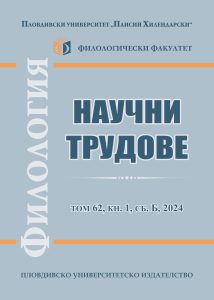VOL. 61, BOOK 1, PART B, 2023, pp. 257 – 274 Full text (En)
Author: Simona Mateva
Affiliation: Paisii Hilendarski University of Plovdiv
Abstract
This paper aims to contribute to the formation of a unitary theory that describes the positions of adverbs in sentences. It analyses high and low adverbs in Bulgarian and English, using Cinque’s idea that adverbs are the specifiers of functional heads and form a universal hierarchy. The fundamental idea behind this approach is that verbs move around adverbs. Adapting Ledgeway and Lombardi’s proposal of a clause-medial functional projection, YP, I have proposed that Bulgarian finite lexical verbs can target a head within the lower adverb space and move to the head of the functional projection YP, but they cannot target positions within the higher adverb space. In contrast, the positions of English finite lexical verbs are very limited. The paper also suggests that English and Bulgarian auxiliaries originate in two different places, with Bulgarian past auxiliaries offering a second Merge site – YP. The analysed examples demonstrate that active past participles in English cannot raise freely within the lower adverb class but could raise from VP to YP and optionally continue to raise higher. However, Bulgarian past participles behave differently depending on whether they are used with a present auxiliary or a past auxiliary.
Key words: high adverbs, low adverbs, verb movement, functional head, specifier






